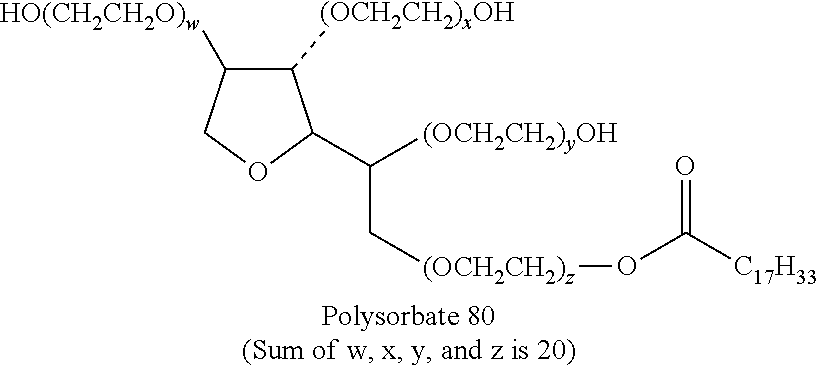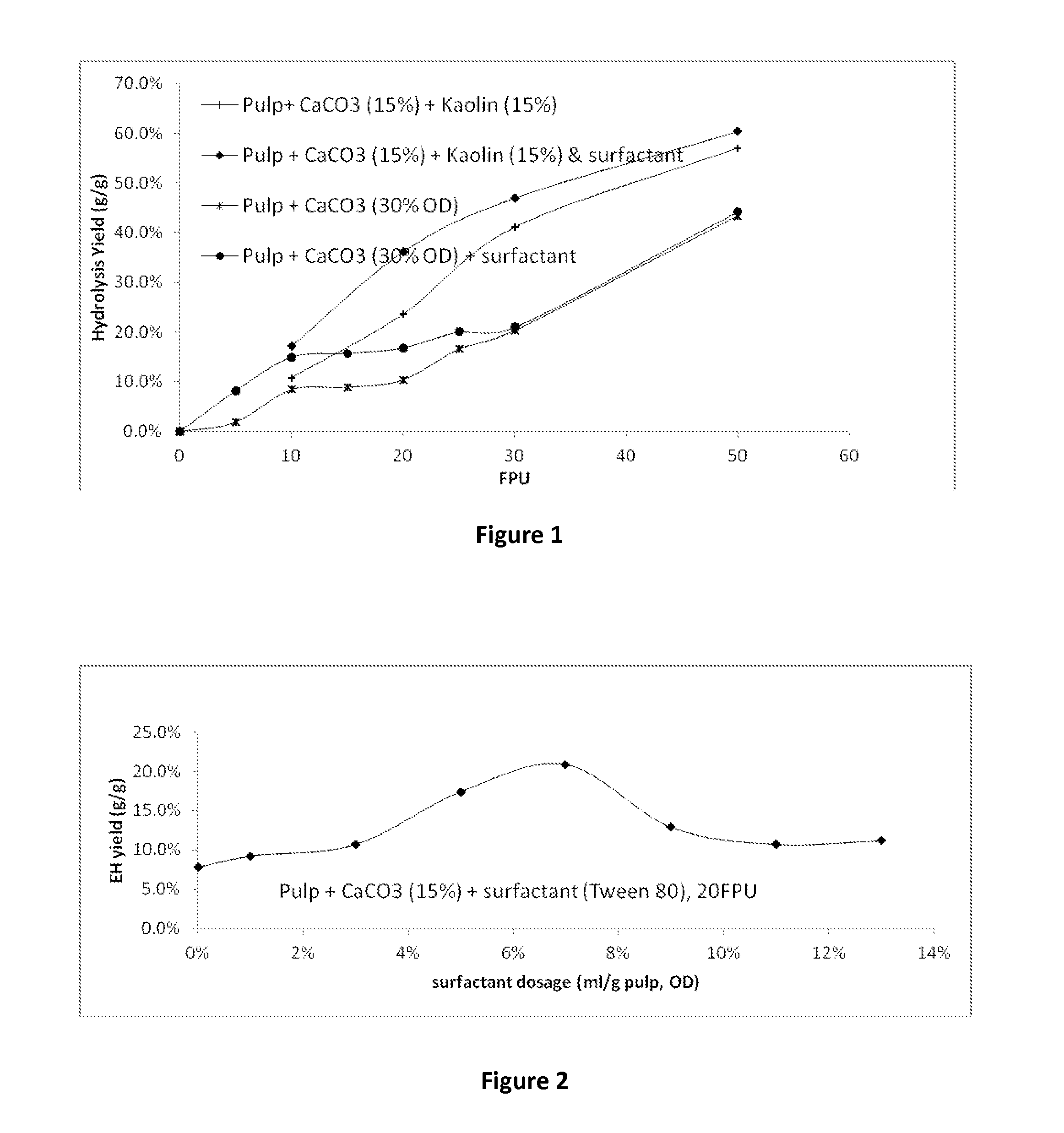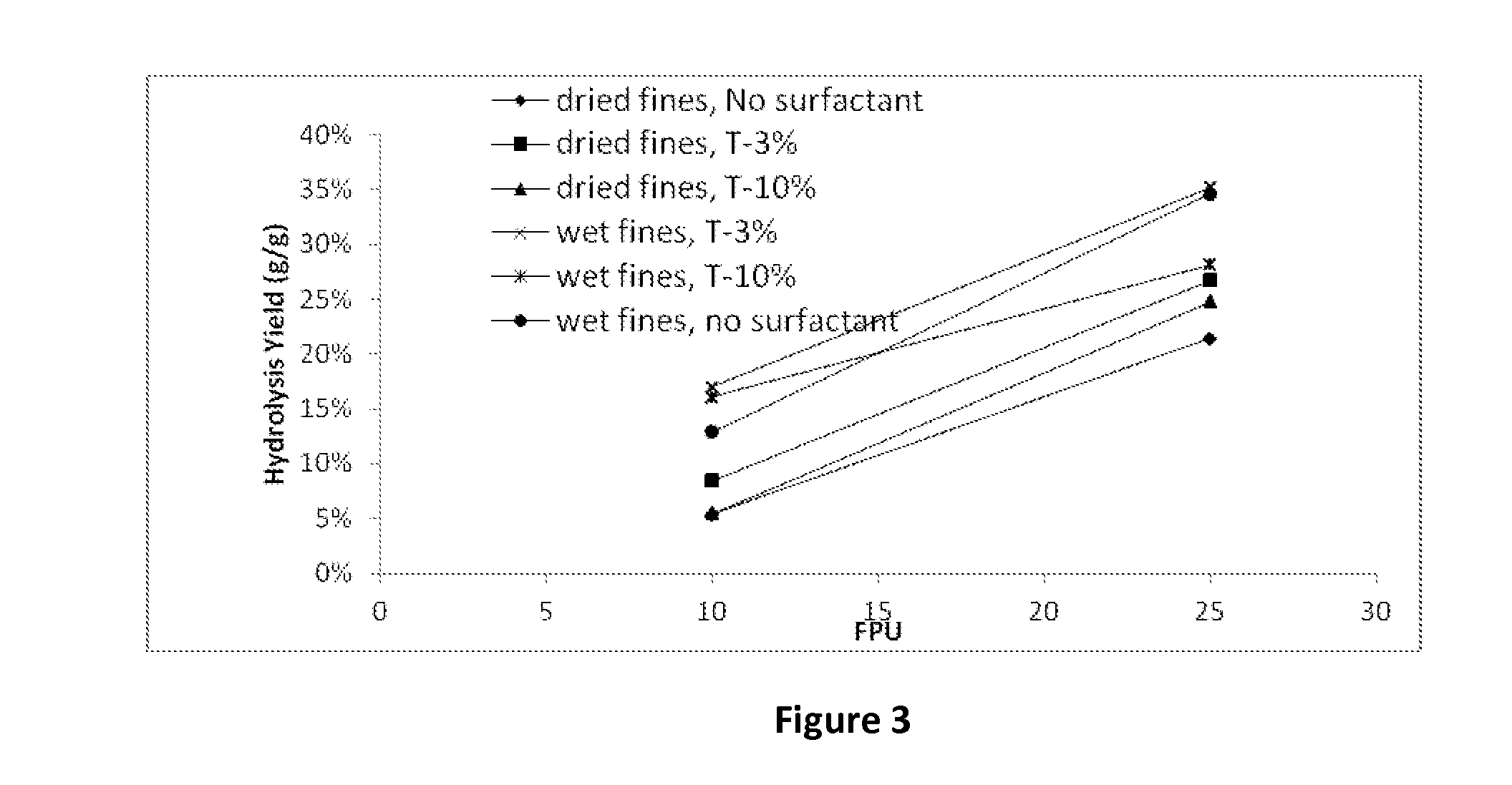Hydrolysis of cellulosic fines in primary clarified sludge of paper mills and the addition of a surfactant to increase the yield
a cellulosic fine and cellulosic solid waste technology, applied in specific use bioreactors/fermenters, biomass after-treatment, biochemical apparatus and processes, etc., can solve the problems of projected future cost increase substantially, achieve high value fermentable sugars, reduce separation cost, and improve yield
- Summary
- Abstract
- Description
- Claims
- Application Information
AI Technical Summary
Benefits of technology
Problems solved by technology
Method used
Image
Examples
Embodiment Construction
[0096]Hydrolysis experiments were conducted on two different feedstocks. The first was a simulated waste feedstock, consisting of a sample of unbleached kraft softwood pulp (UBSWKP) that is typical of repulped old corrugated containerboard stocks (OCC). The second was an actual reject fines waste stream from a recycled paper board mill. (Supplied by Minimill LLC, Dewitt N.Y. in conjunction with Greenpak LLC, Niagara Falls N.Y.). The reject stream consisted of cellulosic fines (35%) with the remainder as ash-producing constituents. The non-cellulosic portion contains kaolin and precipitated calcium carbonate fillers from the waste paper and smaller amounts of plastic and other residues.
[0097]The non-cellulosic portion of the feedstock acts a competitor for enzyme adsorption, and reduces the net yield and productivity of the hydrolysis per unit enzyme reactant. This leads to increased costs and inefficiencies in the hydrolysis process.
[0098]Table 2 below shows the enzymatic hydrolysis...
PUM
| Property | Measurement | Unit |
|---|---|---|
| affinity | aaaaa | aaaaa |
| of time | aaaaa | aaaaa |
| binding affinity | aaaaa | aaaaa |
Abstract
Description
Claims
Application Information
 Login to View More
Login to View More - R&D
- Intellectual Property
- Life Sciences
- Materials
- Tech Scout
- Unparalleled Data Quality
- Higher Quality Content
- 60% Fewer Hallucinations
Browse by: Latest US Patents, China's latest patents, Technical Efficacy Thesaurus, Application Domain, Technology Topic, Popular Technical Reports.
© 2025 PatSnap. All rights reserved.Legal|Privacy policy|Modern Slavery Act Transparency Statement|Sitemap|About US| Contact US: help@patsnap.com



